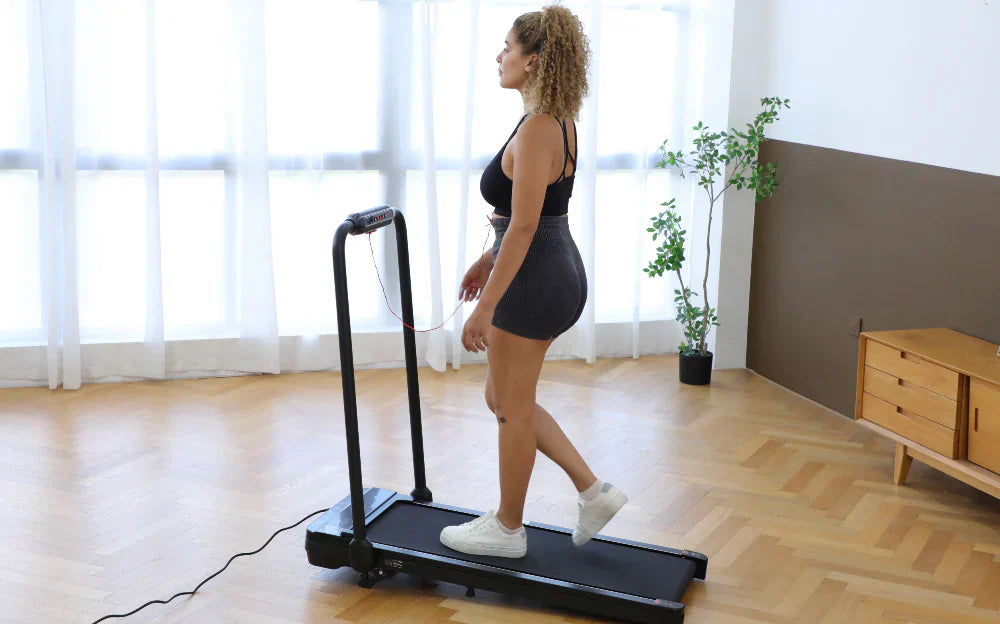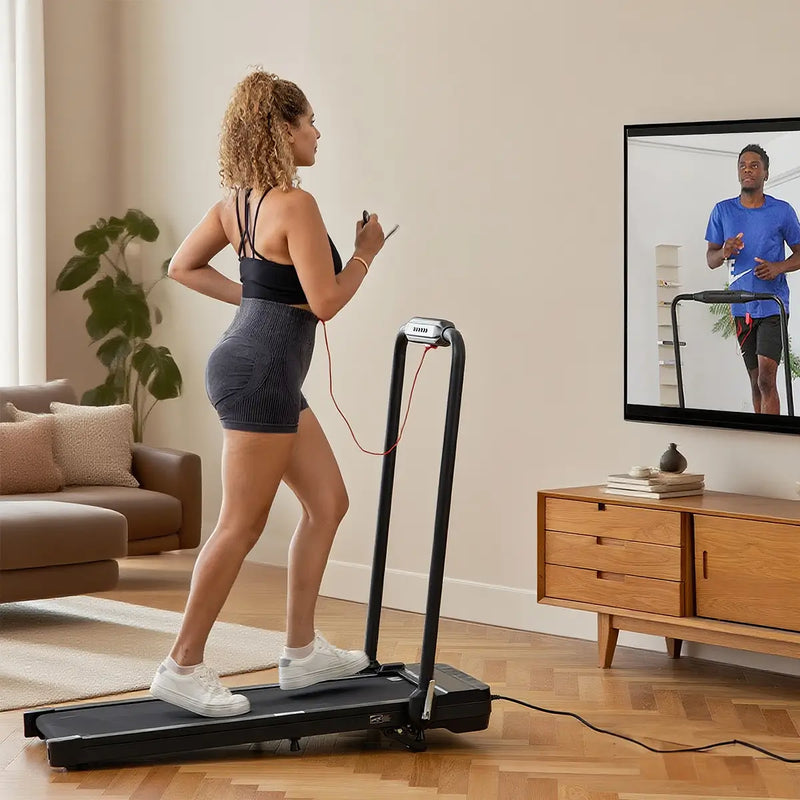You’ve just stepped on your treadmill, ready to sweat. But here’s the question: should you walk on an incline or start running?
Yes, here's the question. Fitness is just about moving. Knowing how to achieve your goals matters as well. Read the article for a detailed guide before starting your workouts.
Benefits of Incline Walking
Friendly on Your Joints
While walking on an incline, the impact on your joints is much gentler compared with running. And you can still elevate your heart rate, making it an excellent choice for beginners, older adults, or anyone recovering from an injury.
Boost Mental Health and Focus
Walking, even at a slow pace, helps release endorphins that lift your mood and sharpen your focus. An article by Psychology Today points out that walking is linked to more creative verbal thinking.
More Accessible
One of the most significant benefits of incline walking is how easy it is to stick with. You don’t need high intensity or long hours. Even short 20-minute walks on an incline can deliver real results. Whether it’s during a lunch break or before bed, you can fit it into your daily life.

Benefits of Running on a Treadmill
High Calorie Burn
Running elevates your heart rate more than incline walking, which leads to higher calorie expenditure in the same amount of time. A 30-minute treadmill run can burn about 300–450 calories, depending on speed and incline. The engagement of the leg, core, and arm makes running a highly efficient fat-burning workout.
Improve Bone Density
Besides improving calorie burn, incline running may also benefit your bone health. One study found that long-distance running increases bone formation markers without harming bone quality.
Build Strength and Endurance
Running on an incline engages your core, glutes, quads, hamstrings, calves, and your upper body. Besides, it improves cardiovascular health. As you run, your heart rate increases, and your blood and oxygen are transported to support workouts.
Make a Comparison: Incline Walking vs Running on a Treadmill
Calorie Burn & Fat Loss
Running naturally burns more calories in less time. However, incline walking can also contribute to fat loss, as long as it is combined with a controlled and balanced diet.
Impact on Joints
If you struggle with knee or hip discomfort, incline walking is much gentler. The reduced impact makes it accessible for beginners or those recovering from injuries.
Bone Density and Strength
Both running and walking are good for bone density. Choose the workout you prefer and stick to it.
Whether you prefer the slow burn of incline walking or the fast-paced challenge of running, both bring unique benefits to your health. The key is to find what keeps you consistent and motivated.
Achieve Your Goal Easily with Tousains Compact Treadmill FIT-7s
Looking for an incline treadmill to make a change today? Look no further than the Tousains compact treadmill FIT-7s. Designed for small apartments, this machine is foldable for easy storage and compact for under-desk use.
Together with nearly 20 years of expertise in the fitness industry and a 2-year warranty provided by Tousains, you can use this machine confidently with no worries. It is time to make a change right now.
Explore more details at Tousains and get one for your workouts!
FAQ
Does incline walking build glutes?
Walking uphill or on a high incline activates your glutes and hamstrings much more than flat walking. For maximum results, combine it with proper form, like pushing through your heels or keeping your core tight.
Is walking in place the same as walking?
Not exactly. Walking in place can increase your heart rate and keep your body active, but it doesn’t provide the same stride length, resistance, or muscle engagement as walking on a treadmill or outdoors. You’ll still burn calories and improve circulation, but incline walking or treadmill walking delivers a more effective cardio and lower-body workout.


